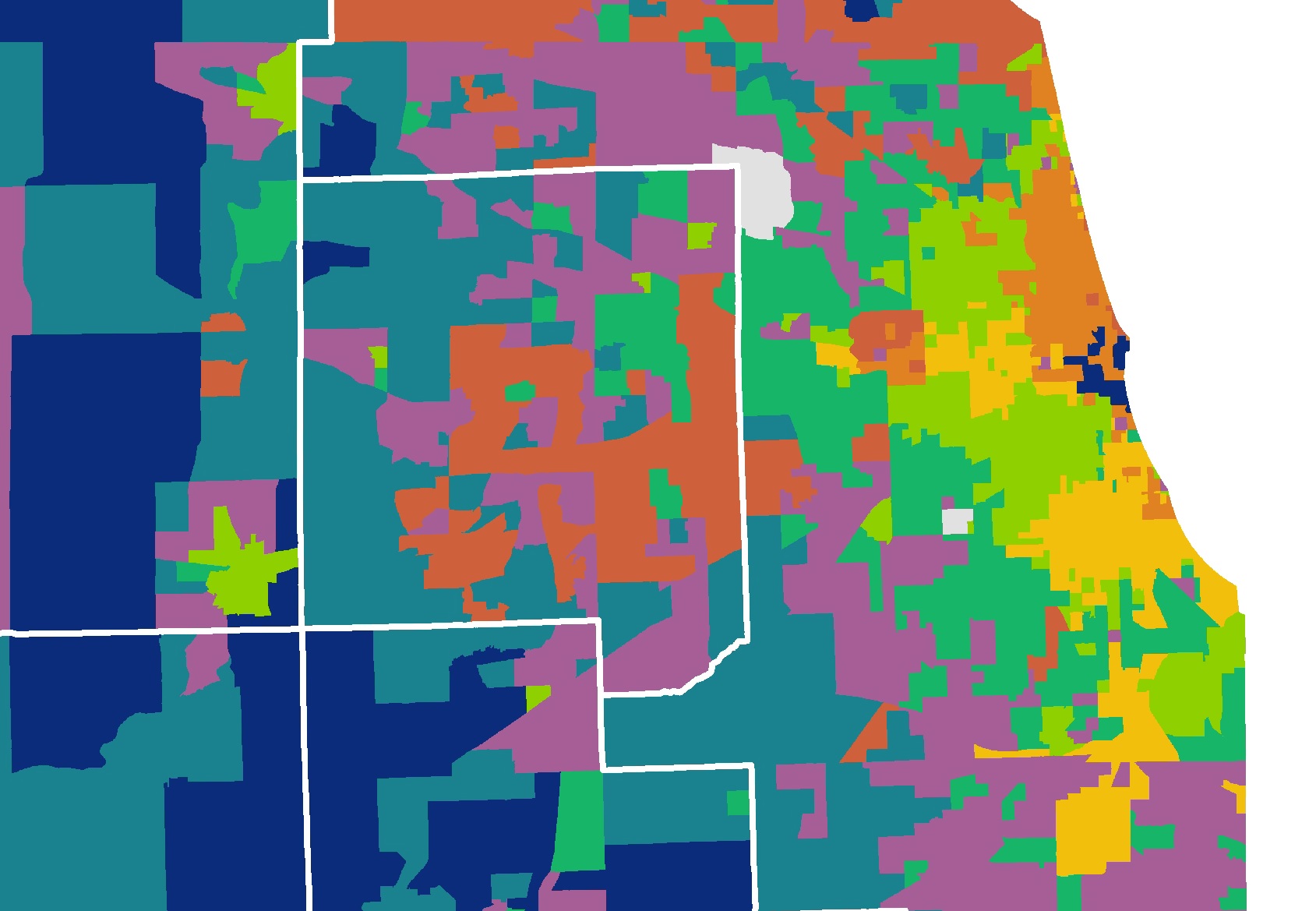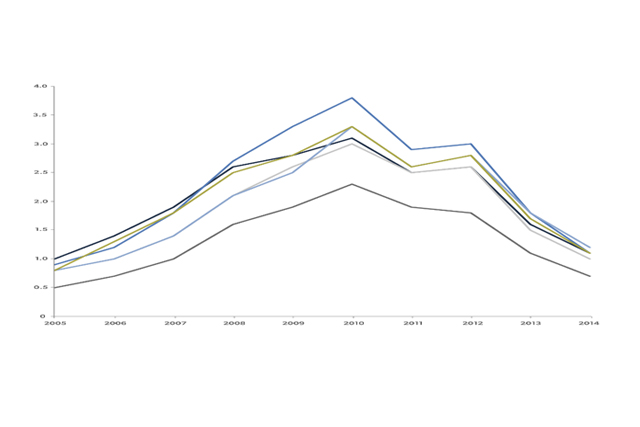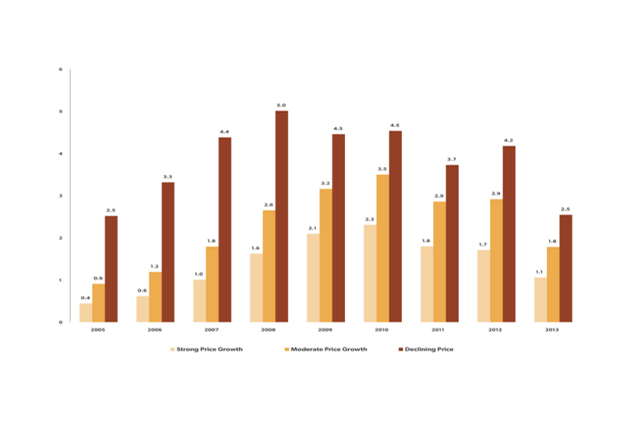IHS recently expanded its Housing Market Indicators data portal to include additional information on neighborhood demographic and economic characteristics. These data will provide portal users with additional context on neighborhood housing needs and help highlight factors that may affect housing market activity in their communities. New data include:
- Age of population
- Race and ethnic composition
- Distribution of household incomes
- Poverty status
- Tenure and housing cost-burden
These data are available for Chicago community areas, regional counties, and local municipalities. Data can be viewed as sortable tables and are also embedded as part of each area’s community profile.
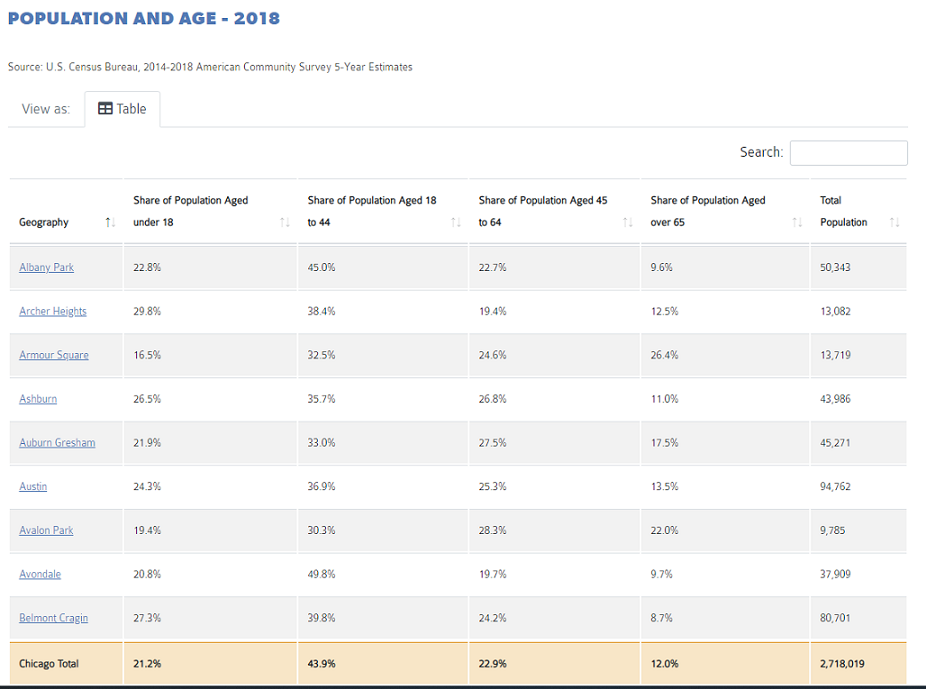
Background on the Housing Market Indicators Data Portal
The data portal was created to provide Chicago housing and community development practitioners, policymakers, and community-based organizations with customizable data and information on communities they work in. Data on the portal summarize key indicators used as part the technical assistance and analyses IHS regularly provides to local partners.
What data are available? Users can search for 13 housing market indicators and six demographic and socioeconomic indicators.
- Housing market indicators include data on housing stock composition, characteristics of property sales, mortgage lending activity, foreclosure filings, and completed foreclosure auction activity.
- Demographic and socioeconomic indicators include data on population, age, race and ethnicity, and household income, tenure, and housing cost-burden.
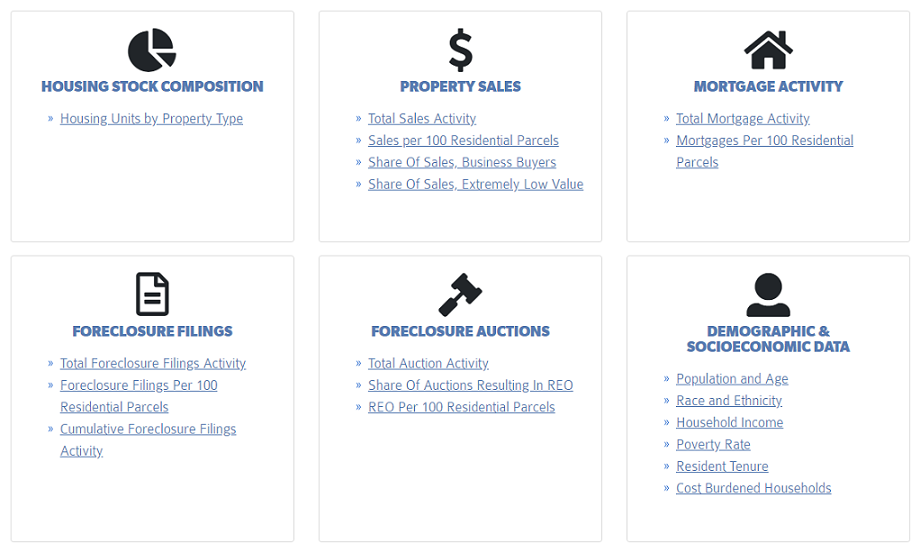
How are the data shown? Housing market and demographic and socioeconomic indicators can be viewed as tables, charts, interactive maps, and community profiles.
- Tables allow the user to view different geographies compared to the City of Chicago total.
- Trends-lines visualize how certain indicators have changed throughout time and include highs, lows, and averages for each geography.
- Interactive maps allow the user to identify spatial concentrations and patterns.
- Community profiles provide a comprehensive report of all indicators for available geographies in the form of tables, charts, and maps.
Not sure what the data show? We’ve included data descriptions that summarize how to interpret the indicator, its importance, and how IHS has used this data in previous analyses. To learn more about how you can apply these data to your work, contact IHS Deputy Director Sarah Duda by email at sduda1@depaul.edu.

